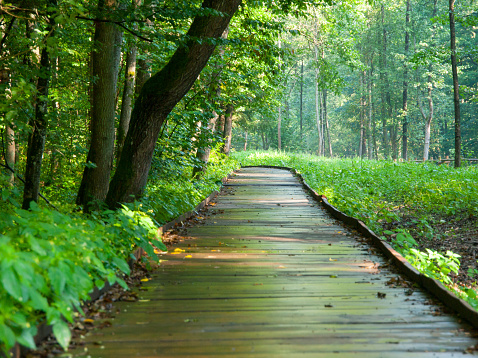 If you live in a city, subdivision, or suburban area, I need you to pay close attention. I might have the perfect solution to your stress problems—and it could save you from a future of depression, anxiety, and other potential mental illnesses.
If you live in a city, subdivision, or suburban area, I need you to pay close attention. I might have the perfect solution to your stress problems—and it could save you from a future of depression, anxiety, and other potential mental illnesses.
People who live in cities or other concrete-laden environments are far more likely to experience higher levels of stress, bad moods, anxiety, and depression: it’s a simple fact. But it doesn’t have to be that way for you. In fact, it used to be that way for me until I started taking my own advice and carving out some time away from the hustle and bustle of the city—without even leaving it.
There’s no question that nature brings on a feeling of serenity. Walking through a quiet park without the sounds of cars whizzing by or seeing high-rise buildings lining the sidewalks creates a real sense of escape from not only the city, but the stressors of daily life, as well. It’s this simple routine walk in the park that has saved my mental health from rapidly declining.
But while I’ve known for a some time that a walk in the park can be therapeutic (even if it did take me some time to follow my own advice), new research is showing that it can actually change how your brain works.
I’m not going to get into the scientific details, but I will tell you that when compared to people who go for walks on a busy street, people who walk through parks have less activity in a part of their brain that’s associated with depression and other mental health issues.
To be more specific—have you ever found yourself repeatedly going over things that are either wrong with you or wrong with your life? In the scientific community, that’s known as brooding and it’s a precursor to depression and other mental issues. Brooding is closely associated with the area of the brain the researchers monitored for this study—the subgenual prefrontal cortex. Along with the decreased brain activity, the researchers found that people who walk through parks generally report feeling better and show signs of improved mental health.
Cities and suburbs are great places. They are full of convenience, culture, and the things most Americans need to survive. But the concrete, cars, buildings, and pace can take a toll on you. Believe me, I am very familiar with the feeling—or at least I used to be before I started taking daily walks in a nearby park that’s become my little oasis.
If you don’t live near a park or public green space, find the nearest one and plan a trip there. Driving out once or twice a week can help calm your nerves and improve your mood. If there’s a park within walking distance, that’s even better! Stroll through the park on your way home from the office, take a short walk on your lunch break, or just head over for a morning saunter. It has the potential to offer an immediate and easy way to improve your mood, your day, and your life.
One important additional note: during your walk, avoid listening to music or walking with a partner. Instead, just enjoy the serenity around you. This quiet time will allow you to truly be free and experience the best-intended results. Believe me, you need this more than you may think.
Sources for Today’s Article:
Bratman, G., et al., “Nature experience reduces rumination and subgenual prefrontal cortex activation,” Proceedings of the National Academy of Sciences of the United States of America web site, May 28, 2015; http://www.pnas.org/content/112/28/8567.
Reynolds, G., “How Walking in Nature Changes the Brain,” New York Times web site, July 22, 2015; http://mobile.nytimes.com/blogs/well/2015/07/22/how-nature-changes-the-brain/?smid=fb-nytimes&smtyp=cur&_r=0&referrer=.
